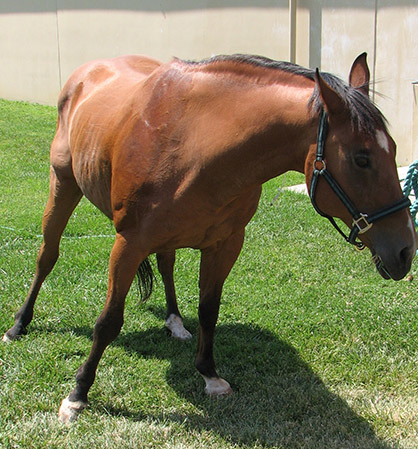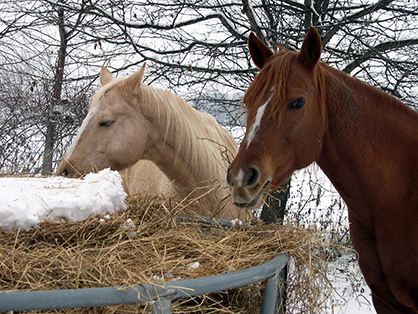UC Davis Conducting Online Survey to Identify Trends in Performance Horse Care and Links to Show Ring Success
December 16, 2014 Comments Off on UC Davis Conducting Online Survey to Identify Trends in Performance Horse Care and Links to Show Ring Success
The Center for Equine Health at the University of California, Davis, is conducting an online survey that seeks to “identify current trends in performance horse care linked to wellness and success in the show ring.”
Continue reading …
The system is centered on a list of almost 700 horse owner observations, related to hundreds of conditions, diagnostics and treatments. It also includes 100+ horse owner skills, custom illustrations, how-to videos, and much more.
Continue reading …New Technology Highlighted at 2nd Saddle Research Trust International Conference
December 12, 2014 Comments Off on New Technology Highlighted at 2nd Saddle Research Trust International Conference
Professor Hilary Clayton gave a fascinating overview of the potential to use new technology in the riding arena to help improve rider position and technique. She explained the potential role of easy to use gadgets for basic kinematic analysis, sensors to buzz reminders at every crooked, out of balance move and an electronic belt to help improve core strength and control by detecting rider pelvic tilt on the horse.
Continue reading …Sunflower Seeds as a Tasty Snack? Turns Out Black Oil Seeds Can be Nutritious For Your Horse!
December 10, 2014 Comments Off on Sunflower Seeds as a Tasty Snack? Turns Out Black Oil Seeds Can be Nutritious For Your Horse!
Be certain to feed only the black seeds, typically purchased for wild birds; their shells are soft and easy to digest.
Continue reading …Does the Phase of the Moon Affect the Sex of Your Foal… or is it an Old Wives Tale?
December 9, 2014 Comments Off on Does the Phase of the Moon Affect the Sex of Your Foal… or is it an Old Wives Tale?
Their study aimed to determine whether there was a significant association between the phase of the moon at the time of mating and the sex of the foal that was subsequently born.
Continue reading …Flow Chart For Diagnosing EPM in Horses
December 5, 2014 Comments Off on Flow Chart For Diagnosing EPM in Horses
“What we discovered was that many veterinarians wanted assistance in properly diagnosing the disease, as it can be masked as many other possible conditions.”
Continue reading …NEW Withdrawal Period for Intra-articular Injections and Shock Wave Therapy in Competition Horses
December 4, 2014 Comments Off on NEW Withdrawal Period for Intra-articular Injections and Shock Wave Therapy in Competition Horses
If you’re one of those competitors who’s made a trip to the show vet the day or two before a big class to have your horse’s hocks, knee, fetlock, pastern, navicular, or coffin joints injected, those days are long gone. At least, four days gone to be specific.
Continue reading …Are You Ready For Winter? Part 1- Stocking Up on Hay
November 26, 2014 Comments Off on Are You Ready For Winter? Part 1- Stocking Up on Hay
Did you know that the average 1,000 pound horse, that gets moderate exercise, needs about 20 pounds of hay per day? Add up the days, and you’re looking at 2,000 pounds of hay to last one horse about three months. Do you have enough hay to keep your horse going through the winter?
Continue reading …New Bolton Center Looking For Volunteer “Foal Sitters” For Equine NICU
November 25, 2014 Comments Off on New Bolton Center Looking For Volunteer “Foal Sitters” For Equine NICU
“Most mares foal between 10 at night and 6 in the morning,” Dr. Palmer said. “It is much more active at night. If you want to see the birth of foal, that’s when you want to be around.”
Continue reading …Horses With Eye Problems Receive Their Own Specialist
November 6, 2014 Comments Off on Horses With Eye Problems Receive Their Own Specialist
The new Equine Ophthalmology Service provides advanced diagnostics, as well as routine, complex and emergency medical and surgical care to horses with a variety of ocular disorders, including corneal ulcers, corneal and eyelid cancer, equine recurrent uveitis, cataracts, and glaucoma.
Continue reading …







